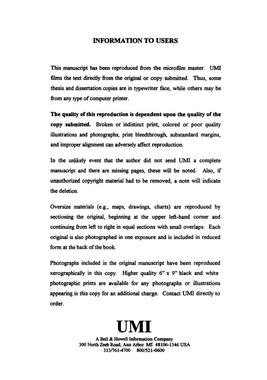| dc.contributor.advisor | Kaid, Lynda Lee, | en_US |
| dc.contributor.author | Murphy, Janet Louise. | en_US |
| dc.date.accessioned | 2013-08-16T12:29:58Z | |
| dc.date.available | 2013-08-16T12:29:58Z | |
| dc.date.issued | 1998 | en_US |
| dc.identifier.uri | https://hdl.handle.net/11244/5609 | |
| dc.description.abstract | This study consisted of two phases. The first phase submitted the data set to content analysis. Coders' analyses included visual and verbal content and overall media bias. The coders coded bias on a five-point scale from "highly favorable" to "highly unfavorable." The second phase involved only those stories coded in phase one as highly favorable or highly unfavorable. Its purpose was to assess verbal and visual content in biased stories. The second phase utilized focus groups to identify interactions between both verbal and visual content. The conclusions provided exploratory data that may direct future research. | en_US |
| dc.description.abstract | This study examined possible scientific evidence of bias in network evening news. Further, it proposed to forward bias determination by analyzing nonverbal and visual exhibitions of bias and examination of the possible change in media bias over the course of the campaign, up to Election Day. Finally, the study submitted highly biased stories to focus group analysis. The study analyzed evening news reports from three major networks from Labor Day to Election Day. | en_US |
| dc.description.abstract | In 1969 Spiro Agnew accused the media of bias against Republicans in the 1968 presidential election process. While this is not a new accusation, it was the first time a person of vice presidential status made the charge. This indictment touched off research into political leanings of a supposedly "objective" press and broadcast system. Previous research demonstrated that significant evidence of bias was not present. However, unlike early studies, nonpartisan groups conducted recent research showing some evidence of bias. | en_US |
| dc.description.abstract | The study found that, while coverage of Clinton was mostly neutral, coverage of Dole was negative. Mean numbers for Dole revealed that stories were more unfavorable at the campaign's beginning than later. Clinton was covered neutrally over the months. Election coverage was unfavorable to Dole in amount of positive versus negative coverage. Of the three networks, all covered Dole on average more unfavorable than favorable. ABC's coverage was significantly more unfavorable than CBS or NBC. The content analysis did not find visual coverage was statistically significant. But, focus groups utilized elements of visual, verbal and nonverbal communication in discussing the level of bias. | en_US |
| dc.format.extent | x, 151 leaves ; | en_US |
| dc.subject | Journalism Political aspects United States. | en_US |
| dc.subject | Presidents United States Election 1996. | en_US |
| dc.subject | Television in politics United States. | en_US |
| dc.subject | Television broadcasting of news United States. | en_US |
| dc.subject | Mass Communications. | en_US |
| dc.subject | Journalism. | en_US |
| dc.title | An analysis of political bias in evening network news during the 1996 presidential campaigns. | en_US |
| dc.type | Thesis | en_US |
| dc.thesis.degree | Ph.D. | en_US |
| dc.thesis.degreeDiscipline | Department of Communication | en_US |
| dc.note | Major Professor: Lynda Lee Kaid. | en_US |
| dc.note | Source: Dissertation Abstracts International, Volume: 59-03, Section: A, page: 0648. | en_US |
| ou.identifier | (UMI)AAI9826290 | en_US |
| ou.group | College of Arts and Sciences::Department of Communication | |
